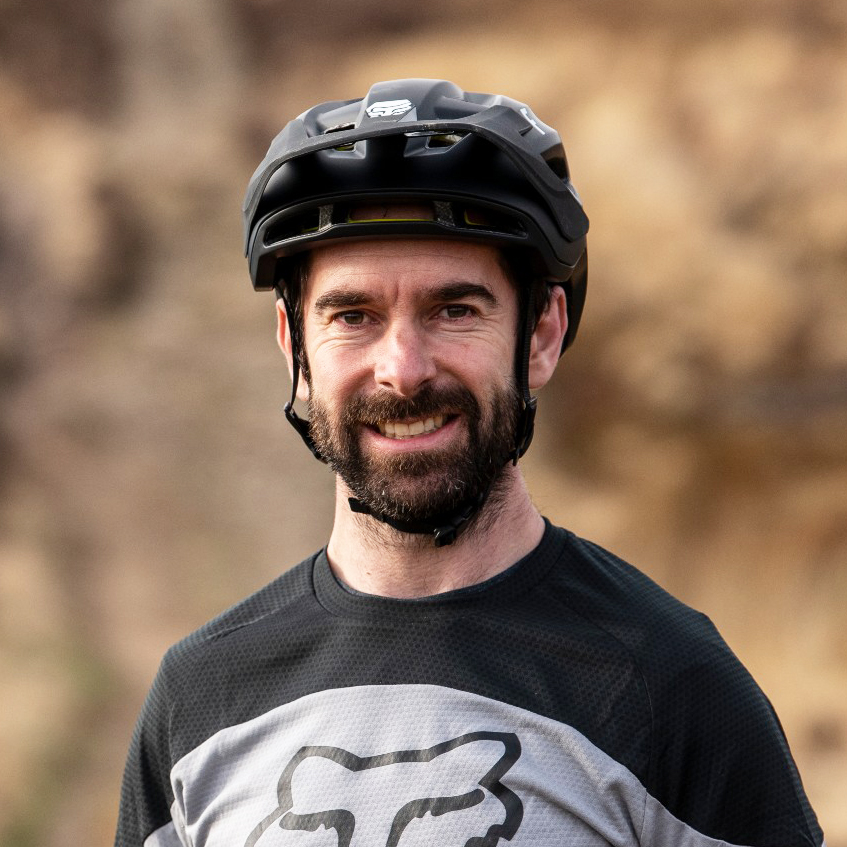Riding the DJI Avinox motor is like looking into the future of electric mountain bikes.
While the Amflow bike it’s bolted to might not be quite as futuristic or special as some of its competitors, the motor truly is.
I’ve tested a lot of the best electric mountain bikes, right from when they first entered the market.
Early examples offered quirky geometry and questionable suspension, but they were an incredibly fun and novel experience when pointed uphill, even if the motors weren’t particularly refined or the power as easy to tame as it is now.
As things have evolved and the bikes have improved, so too have motor and battery tech.
Fast forward to recent times and I thought things couldn’t be improved having ridden the latest Gen 5 Bosch Performance Line CX motor.
DJI entered the chat and promptly told the German brand to hold its proverbial beer.

That first ride on the Amflow brought back many of those feelings of excitement I’d had when first riding eMTBs and a grin I struggled to wipe off my face.
This instantly felt like the benchmark eMTB motor. The top torque and power figures are mind-bending, but that’s not why I fell for it.
The more I rode the Amflow, the more I could appreciate its refined, very natural and easy-to-control feel – even with all the power on tap.
That’s why it’s the best ebike motor I’ve ever used.
Taming the beast

If you’ve read or watched anything about the Amflow bike, you’ll know it’s the Avinox’s power and torque stats that are making headlines.
This motor can deliver 105Nm of torque and 850W of power – that’s massive.
If you need to ride up a cliff face, there’s a ‘Boost’ mode, which lasts 30 seconds and enables you to tap into 120Nm of torque and 1,000W of power.
That’s a stat not even Rocky Mountain’s Dyname 4.0 drive system can match with its 700W of power and 108Nm of torque.
While these numbers have garnered a lot of attention – and rightly so, they’re whoppers – it’s the ride feel that has impressed me.
Sure, it’s a nice feeling being able to accelerate up to the 25kph motor cut-off speed in only a few pedal strokes.
And, of course, those lofty figures play a part in the ride feel. But they were contributing factors rather than the main reason for enjoying this motor so much.
For me, it was all about the sensitivity of the pick-up, how well that power was delivered to the rear wheel and the natural ride feel.
No need to adapt

Jumping on different eMTBs soon gives you an understanding that, while each motor may feel similar once it's up to speed, how they react from a standing start or out of a turn, as well as what happens when climbing technical terrain, differs.
There’s an element of adapting and learning how each motor responds. Whether that means pedalling a fraction earlier, or easing off momentarily, I’ve found to get the most out of a system, you need to spend some time in the saddle and develop a real understanding of how it behaves.
This wasn’t the case with the Avinox unit due to how sensitive and responsive it feels.
The Avinox’s speed sensor measures 42 points of pick-up with every revolution of the rear wheel, which is partly to thank for this.
It equates to almost zero lag as you hoof it out of a corner, where it accelerates rapidly up to speed, but most importantly, it does so in a really predictable way.
So, rather than learning how to ride the system, it felt more like the Avinox was mimicking my inputs accurately, leaving me one fewer thing to concentrate on.

There’s an element of getting your head around all of that power (I’d argue there’s too much, but that’s something for another time), but the process here is very intuitive.
This is all helped by how much control there is when feeding in the power – something you can also tweak to your heart’s content in the impressive all-singing, all-dancing motor app.
Just as I waxed lyrical when I pitted the Amflow against the impressive Whyte ELyte EVO Stag Works, get stuck into a disgustingly technical climb and it’s so impressive how well you can master rear-wheel traction as you ease on and off the power while bumping up and over slippery roots.
The massive level of torque certainly helps here, especially at lower cadences, but that broad support window means you can slow down, ease off, then wind the power back on without the need to shift extra gears or motor modes to avoid spinning the rear wheel uncontrollably.
It genuinely is impressive stuff.
Topping the trumps

If we were to play eMTB motor top trumps, the DJI Avinox would certainly be the card to hold if you were looking to win.
Aside from the power and torque figures, let’s not forget its compact design is a real plus for any bike engineers trying to package a motor into a bike with a complex suspension design.
It’s decently light, too, at a claimed 2.52kg.
On top of that, there’s the incredibly slick integrated touchscreen, which can display just about everything you’d ever need on a ride (who knows, by the time you read this, you may even be able to watch the UCI World Cup on it) and is customisable.
I’ve already mentioned the impressive app, which offers loads of features too, although not all of them are exclusive to DJI.
Regardless, considering this is DJI’s first attempt at a motor, display, battery and app, it’s an incredible feat of engineering that’s certainly worth applauding.
And just think, what will the future hold for the drone and action camera maker going forward? Could the Avinox 2.0 motor (if there is going to be another one) blow this one out of the water? I, for one, can’t wait to find out.
